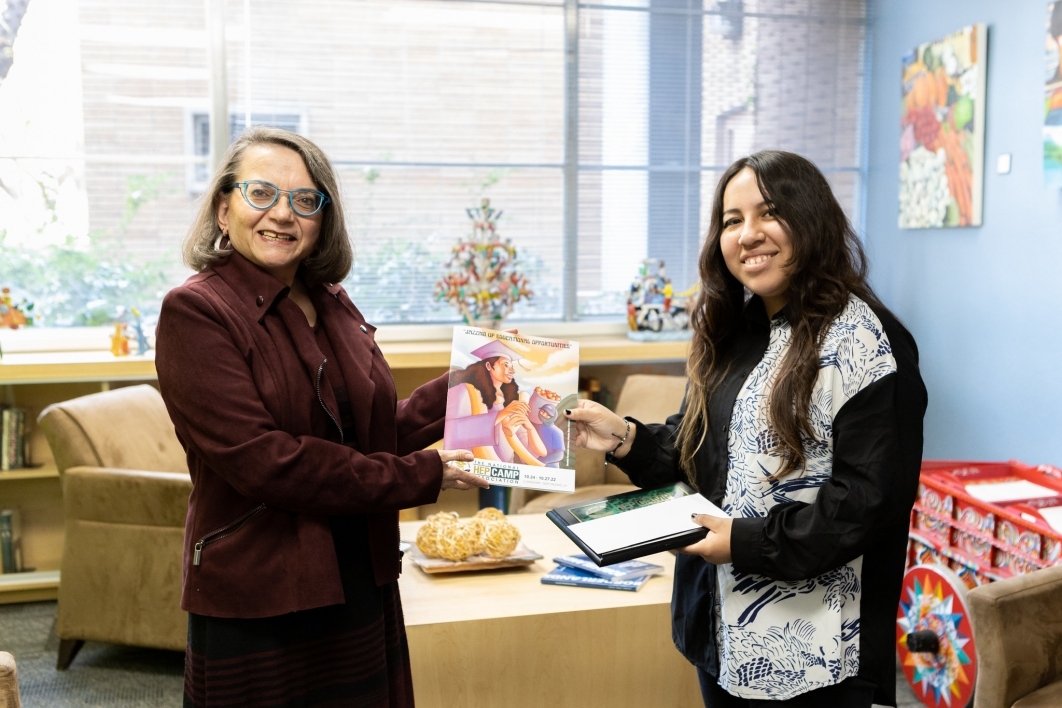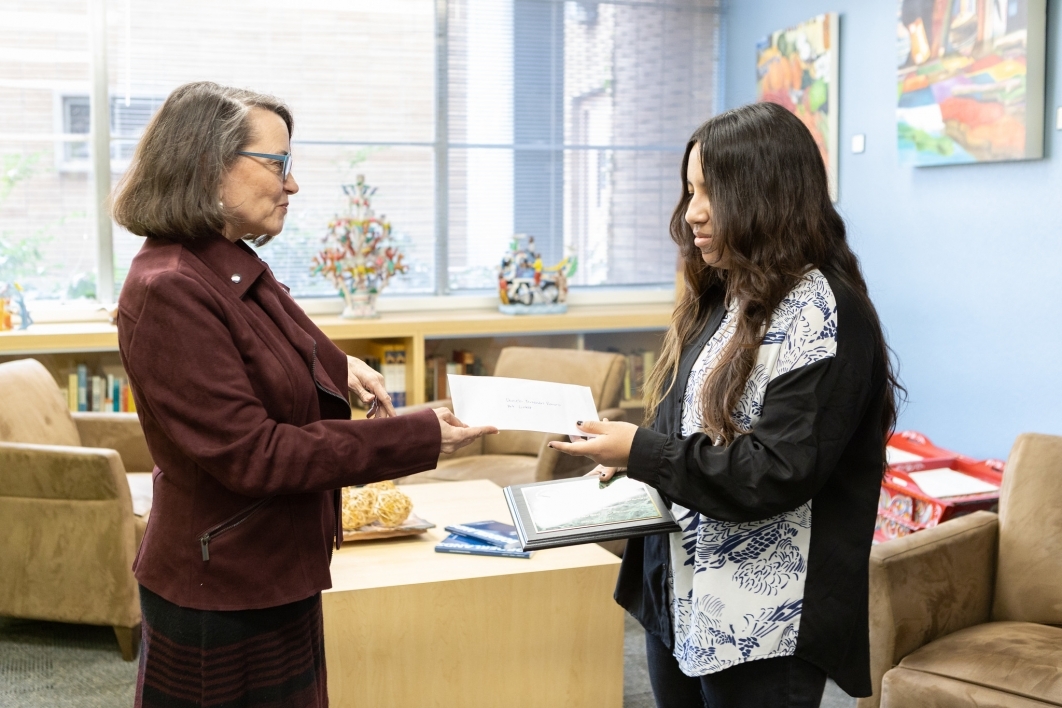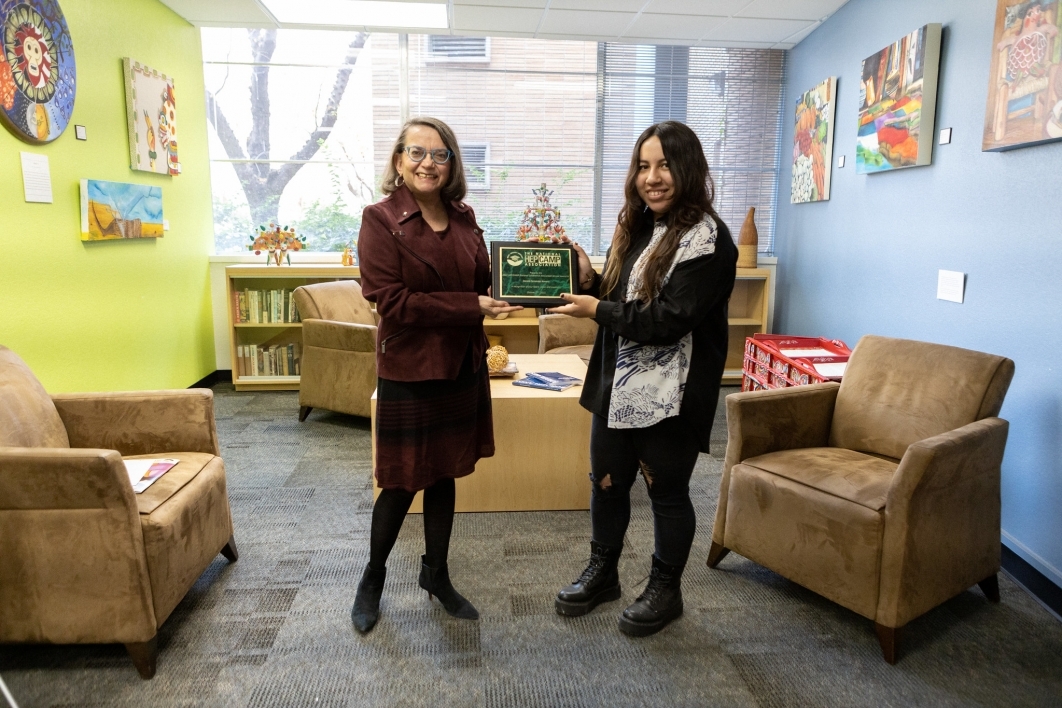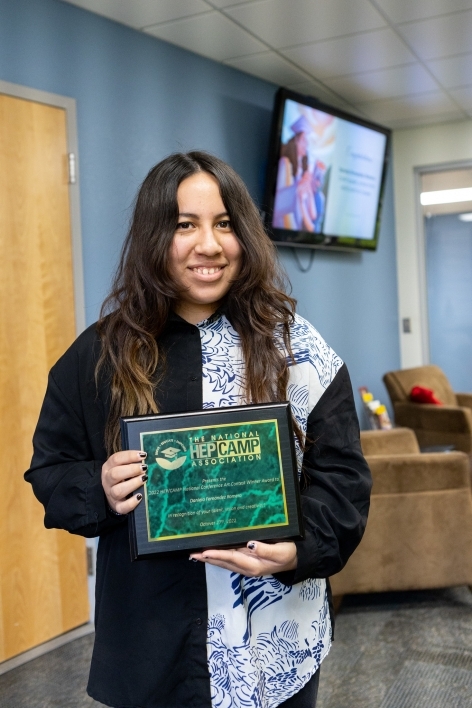Artwork by ASU CAMP Scholar selected for national conference program cover
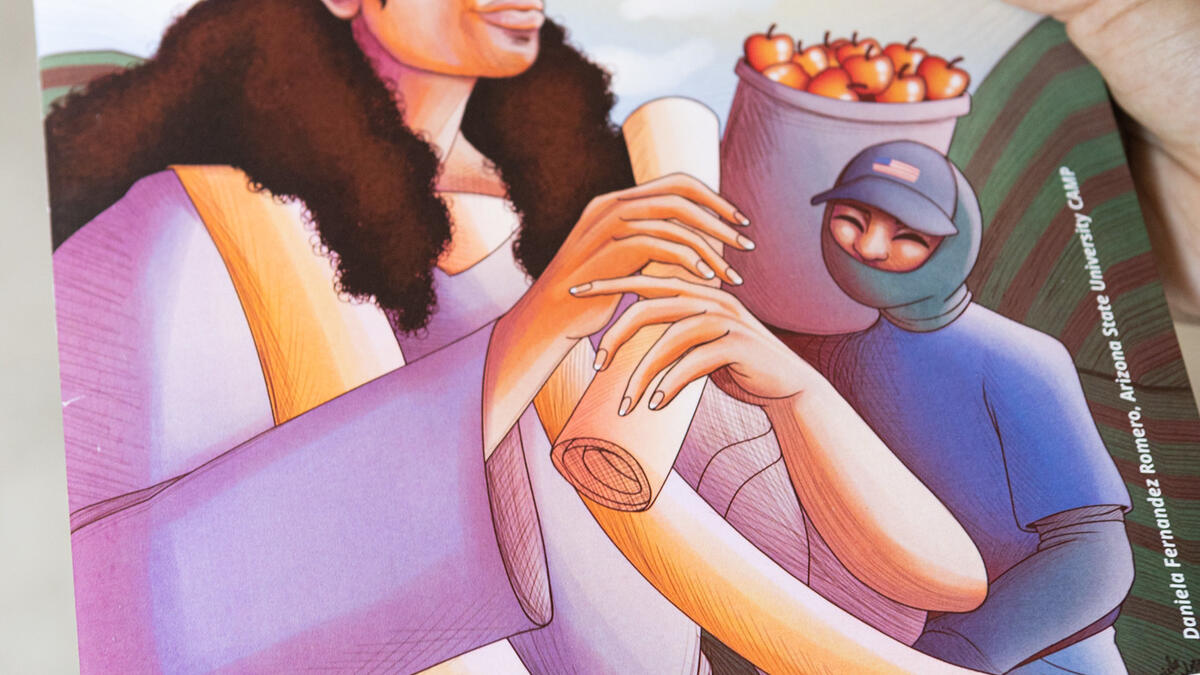
Daniela Fernández Romero holds The National HEPCAMP Association Annual Conference program featuring her artwork. Photo by Meghan Finnerty/ASU
When Daniela Fernández Romero, a sophomore architectural studies major and CAMP Scholar at Arizona State University, heard about the student art contest being hosted by the National HEPCAMP Association annual conference earlier this year, she immediately got to work on a digital illustration.
The contest gives current students and active alumni of a High School Equivalency Program (HEP) or College Assistance Migrant Program (CAMP) the opportunity to share a “visual testimony and representation of their experience in agricultural work and their vision for the possibilities that education provides them.”
Fernández Romero’s vibrant figurative composition uses a rich, warm color palette and depicts a confident, graduating young woman wearing a cap and gown, holding a scroll. Behind her, to the side, stands a proud farmworker clad in an American flag baseball cap, carrying a bushel of apples.
When she was named the winner, not only was Fernández Romero’s artwork published on the association's website and the program cover for its national conference, during a Dec. 2 ceremony on ASU's Tempe campus, she received a $500 scholarship check and recognition plaque commemorating her achievement.
“I came across the painting ‘JAZZ’ by the French artist Etzi, which really inspired me due to its composition and use of warm colors,” Fernández Romero said. “I also took great inspiration from my own experiences as a CAMP student, as well as my mother’s experience being a fieldworker."
“I am proud that Daniela’s abilities were recognized on a national scale and happy that, as a first-generation migratory student from a border community, Daniela is thriving at ASU and continuing to develop her artistic talents in a holistic manner,” said ASU CAMP Scholars Program Director Seline Szkupinski Quiroga, who presented the awards.
Born in San Luis Rio Colorado, Sonora, Mexico, Fernández Romero immigrated to the United States at the age of 8 with her mother, father and younger sister. She credits the support of the Migrant Education Program for her ability to master English within a year after arriving and later for helping her to pay for Advanced Placement high school courses.
CAMP began in 1972 to support educational opportunities for students from migrant or seasonal farmworker families. Because Arizona has one of the largest populations of migrant and seasonal farmworker students in the country due to its robust agricultural community, the ASU CAMP Scholars Project was founded in 2016 with a grant from the U.S. Department of Education’s Office of Migrant Education. Housed in the School of Transborder Studies, it is the only program at ASU focused on serving first-generation farmworking communities of Arizona.
The program supports 35 students each year and has enrolled more than 200 students since its inception. The project provides the tools and mentorship necessary to successfully navigate the university experience and graduate with a degree.
“Migratory students who decide to attend Arizona State University are choosing to leave their communities of origin and embark on a journey that is unfamiliar to what they and their families have experienced,” explained Szkupinski Quiroga.
Fernández Romero elaborated on some of the specific challenges she has faced. “I am a first-generation student, which I am proud of, but it also means that I do not have any close family members to guide me through my college experience.” Homesickness is also problematic, “because I am very close with my family, but because I now live hours away from them, I am only able to see them every couple of months.”
“I chose to study at ASU because of its diverse environment and because it offers so many great opportunities for students like me, like the CAMP program,” said Fernández Romero, making special note that the program has helped her succeed as an architectural studies major by providing access to financial aid, counseling and clubs, and giving her a sense of community.
Fernández Romero loves to draw and sketch. “Just looking at the designs of buildings and public areas has been interesting to me since childhood,” she said. In addition to her major studies, Fernández Romero was inspired by her love of Japanese culture and media to study the language, with the goal of becoming trilingual. “Joining the ASU CAMP program made the transition to college much easier and really helped me feel like I am not alone in this journey.”
More Arts, humanities and education
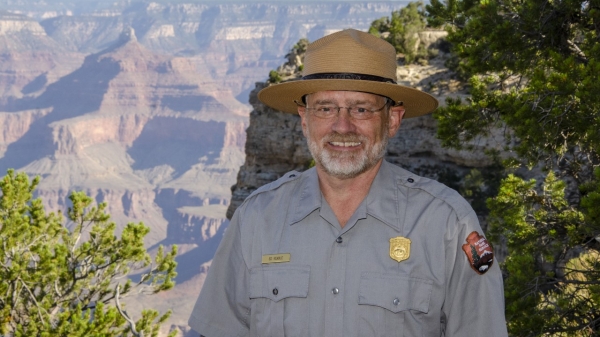
Grand Canyon National Park superintendent visits ASU, shares about efforts to welcome Indigenous voices back into the park
There are 11 tribes who have historic connections to the land and resources in the Grand Canyon National Park. Sadly, when the…
ASU film professor part of 'Cyberpunk' exhibit at Academy Museum in LA
Arizona State University filmmaker Alex Rivera sees cyberpunk as a perfect vehicle to represent the Latino experience.Cyberpunk…

Honoring innovative practices, impact in the field of American Indian studies
American Indian Studies at Arizona State University will host a panel event to celebrate the release of “From the Skin,” a…
